工作记忆:大脑处理信息、思考与学习的完整指南
解决难题时,你如何将所有信息记在脑中?阅读书籍、收听播客或与人交谈时 —— 大脑又是如何留存所有信息的?
答案就是心理学家所说的工作记忆。
与我曾深入探讨过的长期记忆不同,工作记忆无关 “回忆过去”。相反,它的作用是在脑中“整合当下信息”,以便你开展学习、做出决策和解决问题。
工作记忆本质上就是你的 “大脑带宽”。若你的工作记忆能力较强,或能更高效地运用它,你的思考与学习能力也会更强。因此,对于任何希望在工作、学习和生活中表现更出色的人来说,理解大脑这一重要功能都至关重要。
为了帮你理解工作记忆,我再次与拥有认知科学硕士学位、目前正在攻读博士学位的 Jakub·jilek 携手,共同撰写了这份完整指南。指南将解释工作记忆的定义、运作机制,最重要的是 —— 如何通过简单方法更好地运用它来提升思考与学习能力。
什么是工作记忆 ?构成你思考和学习能力的四要素
理解它最简便的方式,是将其想象成木匠的工作台:木匠制作新产品时,会将工具和材料暂时放在工作台上。工作台的空间有限 —— 一次只能放置少量物品。
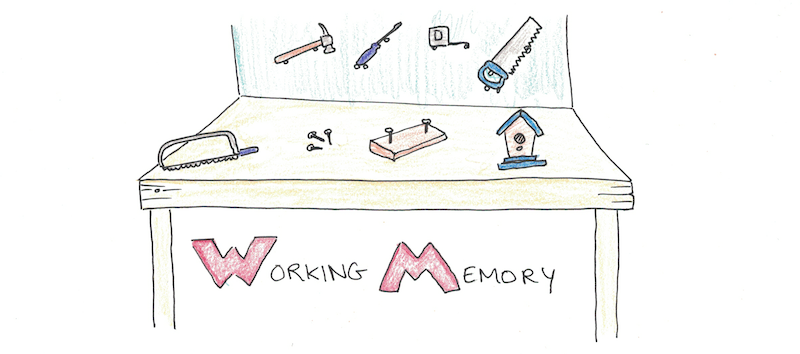
同样,当你解决问题或做决策时,也会将信息暂时储存在工作记忆中。工作记忆的容量也很有限 —— 一次只能容纳少量信息。
但工作台不只是用来存放材料的地方,它更是 “加工空间”:木匠会在上面组合不同材料,制作出新产品。同理,工作记忆也不只是简单的储存器。它能让你产生新想法、调整想法、组合想法、检索想法,或对想法应用不同规则与策略,助力你应对生活中的各类事务。
凭借这些功能,工作记忆成为思考、规划、学习与决策的基础。
科学家已提出多种工作记忆模型,本指南将以艾伦・巴德利(Alan Baddeley)提出的最主流模型为核心展开。根据该模型,工作记忆可分为四个组成部分:
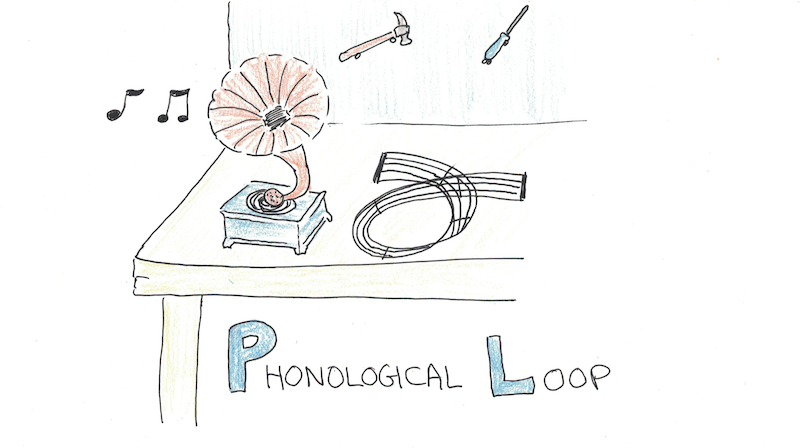
第一部分是语音环路(Phonological Loop)。它本质上是声音的储存器 —— 能让你暂时记住数字、单词和句子(通过它们的发音)。
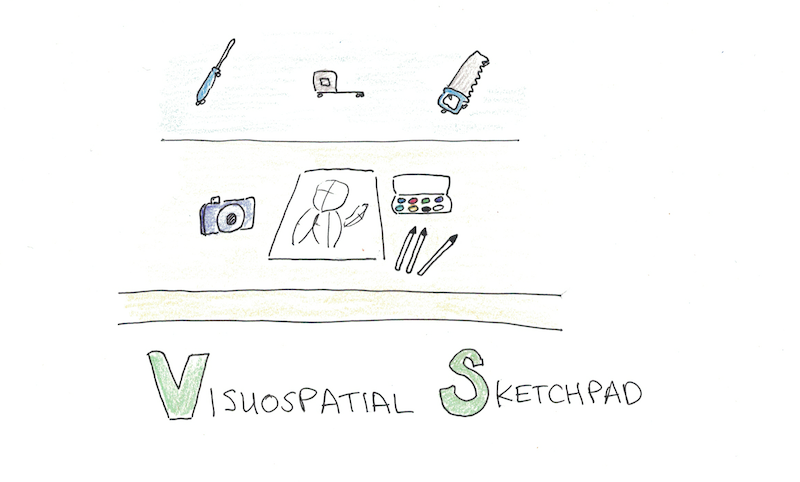
第二部分是视觉空间画板(Visuospatial Sketchpad)。顾名思义,它负责储存物体的二维和三维图像。
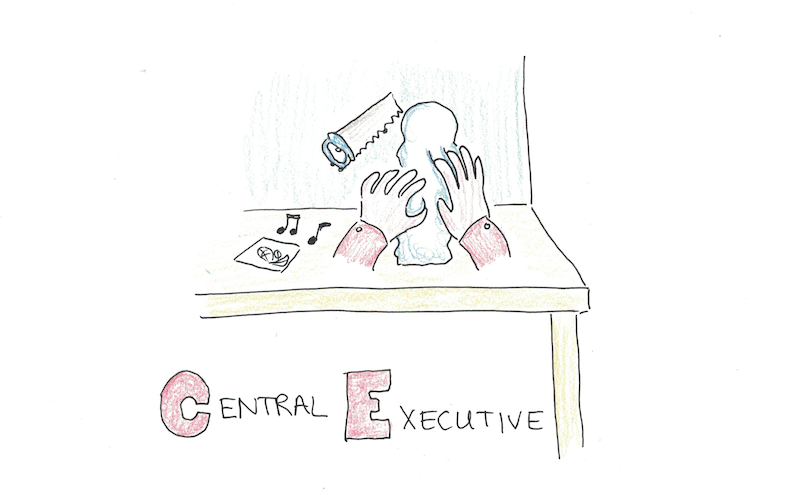
第三部分是中央执行系统(Central Executive)。其核心职责是引导注意力和处理信息。
结合之前的 “工作台类比”:语音环路和视觉空间画板可看作两种不同的 “台钳”,用于固定材料。每种台钳能固定不同类型的材料(如木材或金属)—— 就像语音环路储存声音、视觉空间画板储存图像一样。
而中央执行系统则好比木匠本人:木匠决定使用哪些工具和材料,就像中央执行系统决定关注哪些信息;木匠用凿子、锯子、电钻加工金属和木材,制作出椅子等新产品,同理,中央执行系统会重组想法,并应用语法规则、逻辑或代数法则,得出问题的解决方案或做出决策。
巴德利的模型中还有第四部分——“情景缓冲器(Episodic Buffer)”,但由于其研究深度不及前三者,本指南暂不展开。
你可能还听过 “短时记忆(Short-Term Memory)” 一词。目前科学家用它来指代 “简单的临时信息储存(不涉及信息处理),储存的信息可为视觉、听觉等任何类型;而 “工作记忆” 则指 “完整的信息储存与处理系统”。
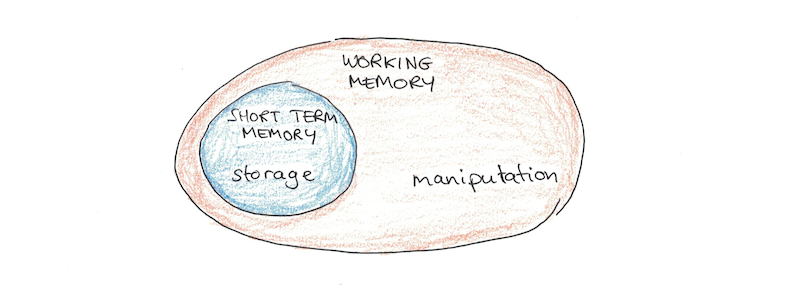
快速回顾工作记忆的三个核心部分:
语音环路—— 储存声音(含单词、数字、句子)
视觉空间画板—— 储存物体图像
中央执行系统—— 引导注意力并处理信息
本指南将逐一探讨这三个部分,分析它们对学习的影响。此外,还将涵盖与工作记忆密切相关的另外三个重要主题:
组块化(Chunking)—— 信息的压缩方式
认知负荷(Cognitive Load)—— 工作记忆承担的处理压力
焦虑(Anxiety)—— 导致工作记忆出现问题的 “元凶”
为何工作记忆至关重要
工作记忆是智力的关键组成部分。你的大部分学习效果都取决于工作记忆的表现。
回想一下你上次听一节难度较高的课程的经历。刚开始时,你可能还能跟上节奏,但到后来,理解教授所讲内容会变得越来越困难。即便你尽全力集中注意力,最后还是会感到困惑与沮丧。
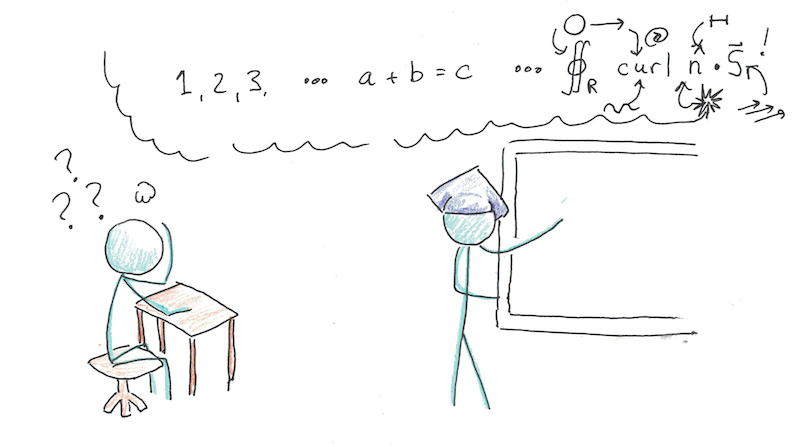
事实证明,罪魁祸首很可能是工作记忆超载(其他可能性可参见 “总结与结论” 部分)。学习材料要求你的工作记忆同时处理过多新信息,最终导致这一系统不堪重负、无法正常运作。
即便你不会频繁遇到听不懂的课程,理解工作记忆的运作机制,对于提升学习效果也至关重要。
工作记忆如何支撑你的学习能力
要学习,首先必须理解。而理解的过程,始终离不开工作记忆的参与:
你的语音环路需要记住你阅读或听到的单词发音;中央执行系统需要在你接收信息的过程中,不断更新这些语音序列;最终,这些单词的含义还需整合起来,才能让你理解完整内容。若其中任何一个环节出现问题,你都会陷入困惑、无法跟上节奏。
解决问题也是学习过程的核心环节,而这同样需要工作记忆全力以赴。
以解决一道两位数加法题为例:
87 + 65 = ?
大多数人在小学就学会了计算这类题目(答案是 152)。然而,尽管题目看似简单,完成这一计算却涉及一系列复杂的认知过程。
首先,你的视觉空间画板需要储存这些数字符号的视觉表征;其次,中央执行系统需要运用加法规则,并储存计算的中间步骤(例如 80 + 60);最后,语音环路需要在内心默念指令,以掌控整个运算过程(如 “先算 80 加 60” 等)。若其中任何一个环节出错,结果依然是困惑与思路中断。
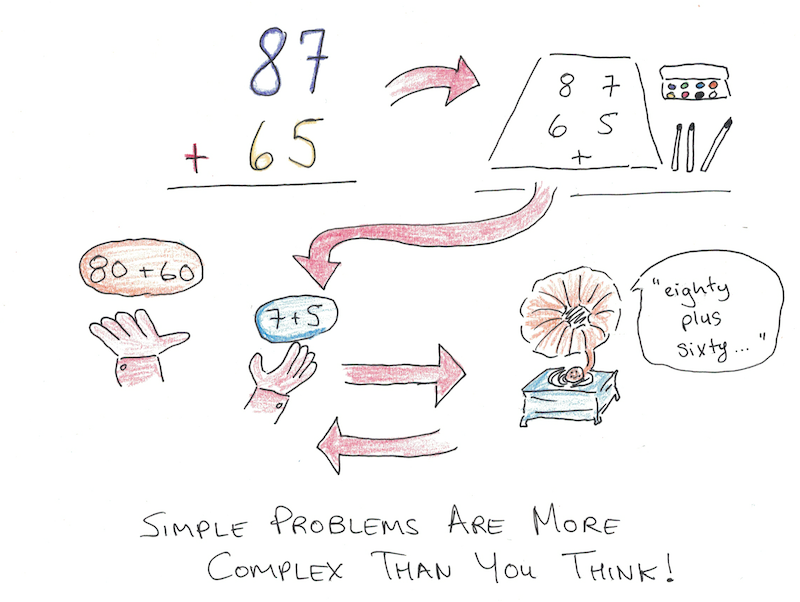
除了理解与解决问题,工作记忆还支撑着许多其他学习技能。例如记笔记—— 你需要快速储存并处理刚刚听到的内容,同时还要加工当下正在接收的信息。
因此,研究发现工作记忆容量与阅读理解能力、数学能力及问题解决能力显著相关,也就不足为奇了。工作记忆能力更强的学生,成绩通常更优异。最重要的是,工作记忆容量越高,往往预示着学习成果与学业表现越好。
工作记忆可以提升吗?
你可能听说过一些记忆专家,他们能记住惊人长度的随机数字或单词序列。例如,拉詹・马哈德万(Rajan Mahadevan)能准确回忆出数学常数 π 的 31811 位数字(长期记忆表现),其工作记忆则能记住多达 63 个随机呈现的数字或单词 [21]。另一位记忆高手苏雷什・库马尔・夏尔马(Suresh Kumar Sharma)更是保持着吉尼斯世界纪录 —— 他能无差错背诵 π 的 70030 位数字 [22]。
你可能会认为,只有天生具备天赋,才能达成如此惊人的成就。
尽管这两位记忆专家从小的工作记忆能力可能就高于平均水平,但基因天赋绝非全部原因。若他们的工作记忆真的是 “天生超群”,那理论上他们在所有需要工作记忆的任务中都应表现出色,对吧?
研究人员决定验证这一想法 [23]。他们没有给拉詹・马哈德万呈现数字或单词,而是让他记忆一系列符号(如!、@、*、+ 等)。你能猜到他能记住多少个符号吗?
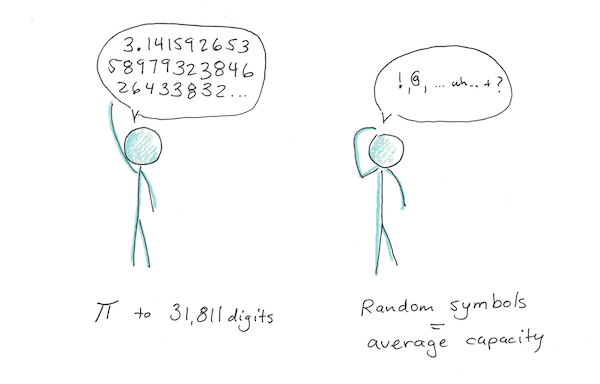
结果出人意料:拉詹的工作记忆仅能容纳 6 个符号 —— 与普通大学生的水平完全一致。
科学家在采访这些记忆专家及其他类似人才时发现,他们都投入了大量时间练习以打磨记忆能力。更重要的是,他们会运用高度复杂且精细的记忆技巧,例如 “位置记忆法”(method of loci)或 “故事记忆法”(story method)[24]。
这些结果都表明,工作记忆在一定程度上和其他技能一样 —— 通过练习,就能得到提升。
尽管科学界对于 “能否提升工作记忆的核心加工过程” 及 “提升程度如何” 仍无定论 [25],但研究人员已发现了许多能让工作记忆更高效运作的技巧。在接下来的章节中,我们将介绍如何运用这些技巧,提升你的理解能力与问题解决能力。
如何测量你的工作记忆?
若你打算提升工作记忆,了解如何测量它会很有帮助。科学家会区分 “短时记忆容量” 与 “工作记忆容量”。
短时记忆容量指的是你暂时储存少量信息的能力,这些信息可以是数字、字母、单词、符号、图片、场景等任何内容。“短时记忆广度” 则是指一个人能在短时记忆中储存的信息项目数量。
想知道自己的 “数字广度” 吗?可以尝试以下在线测试:向下滚动网页,取消勾选 “sound enabled”(声音开启),将初始序列长度设为 3,然后点击 “开始”。至少测试 3 次,取平均值,即为你的数字广度。若想重复测试相同长度的序列,也可点击 “repeat”(重复)。
人类的平均短时记忆广度为 4 个项目,但具体数值会因信息类型而异。通常情况下,人们能记住的字母数量多于单词,能记住的数字数量多于字母,而平均数字广度为 7 个数字。
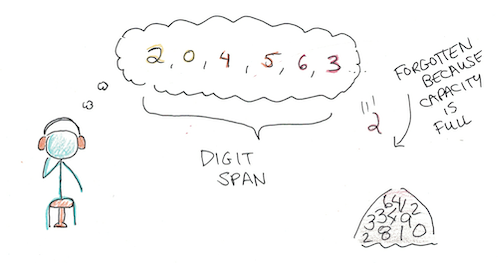
工作记忆容量则是你 “储存与处理信息” 的综合能力。传统上,研究人员会通过 “复杂广度任务”(如运算广度任务)和著名的 “n-back 任务” 来测量它。这类测试无法在线完成,但你可在此处下载相关测试工具
Phonological Loop: How Music Disrupts Your Studies

Phonological loop is the first kind of short-term memory storage which stores sounds. Being able to have a conversation, listen to music and understand a lecture all depend on your phonological loop.
As you read these lines, your phonological loop is working at every moment. It uses subvocalisation (your internal voice) to translate visual information (digits, letters, words and sentences) into auditory information, which is then processed to extract meaning.[29]
If the subvocalisation process is disrupted, it will be hard to maintain information in your phonological loop. As a consequence, your comprehension will suffer. To see this on yourself, try the following experiment:
If you haven’t already done so, measure your digit span. After you’ve done that, measure your digit span again. This time, however, firstly start playing a favorite song of yours that contains lyrics (it shouldn’t be a purely instrumental piece). Set the volume to a comfortable level (not too quiet but not too loud). What is your digit span now?
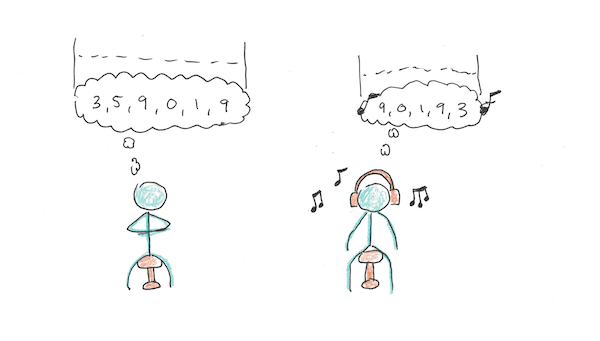
It’s likely that your digit span is now one or more digits lower.[30] This is because the music interfered with the subvocalisation process, which was thus less effective at encoding information in your phonological loop.
Are all sounds equally harmful to learning?
Many studies have shown that listening to many kinds of sounds and music can have a profoundly negative impact on your working memory, reading comprehension and mathematical problem-solving.[31] For instance, one study has shown that students who revise in a quiet environment later perform 60% better in an SAT comprehension test than their peers who listen to music (with lyrics).[32]
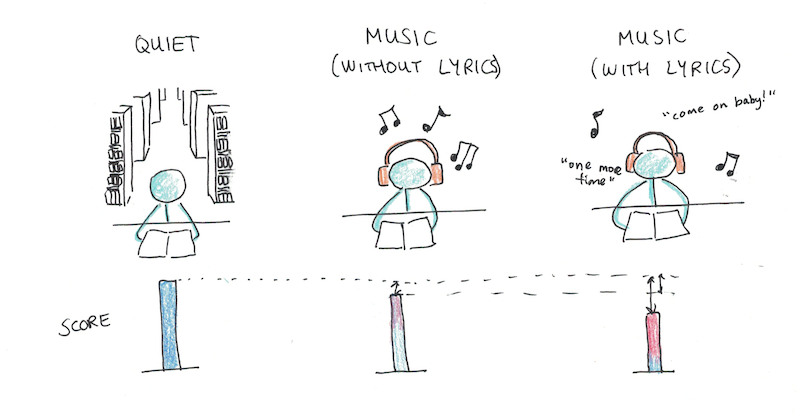
However, different kinds of sounds have different effects. Firstly, the detrimental effect is much stronger with vocal music compared to instrumental music. One study showed that students who revised without music were 10% better than students who revised while listening to instrumental music. [33]
Secondly, it doesn’t matter if you don’t understand the language. Foreign language also impairs working memory. [34] Thirdly, although even pure tones can disrupt performance, the tones have to fluctuate. If the pure tone has a constant pitch, it doesn’t have a harmful effect on memory. [35]
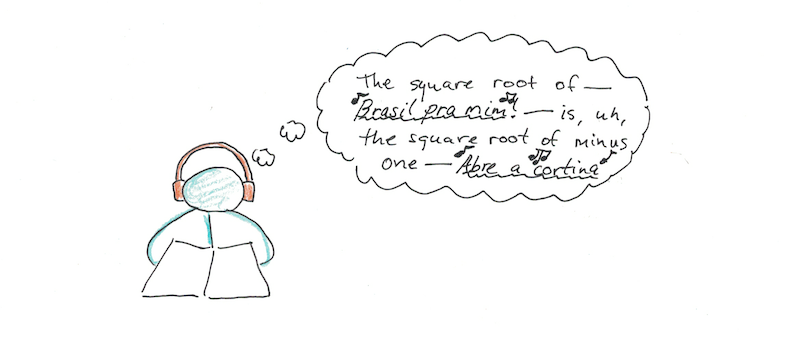
Does music affect everyone the same way?
Listening to music doesn’t affect everyone in the same way. In general, individuals with a high working memory capacity are more resistant to the harmful effects of music.[36]
However, students are very bad at predicting what effect music has on their performance. Interestingly enough, the students who prefer listening to music while studying are also those whose reading comprehension is most likely to suffer due to interference from music.[37]
Why do so many students listen to music although it impairs their learning? Why do they even feel that they benefit from this? We believe that the reason for this might be twofold:
Firstly, music could help reduce anxiety and help one calm down, which may be beneficial for studying.[38] Secondly, music could drown out even more disrupting external noise, which might actually help to protect working memory.
Interestingly, although white noise seems to worsen the performance of students with normal attention, it can actually improve the performance of students with attention problems.[39]
In general, we would recommend that you avoid listening to music while studying (especially vocal music). It’s important that you study in a quiet environment where no-body is speaking or making any other noise. The exception to this rule is when you’re preparing for an exam that will take place in a noisy environment. In this case, it’s beneficial to spend some time revising in a noisy environment (to see why, check our Complete Guide on Memory, section “ Context-dependence ” ).
If you cannot revise in a quiet environment, the best way to reduce noise is by using earplugs. Alternatively, a not too harmful option is to listen to white noise (check out the plethora of white-noise nature sounds on YouTube). If you do have to listen to music, go for instrumental music.
How to use sound to boost your learning
The first strategy to improve your learning is by protecting your phonological loop from interfering sounds. Scientists have found yet another strategy that significantly boosts learning and that also makes use of sound.
In an intriguing study, students had to memorize lists of words.[40] The first group read the words aloud, the second listened to a recording of their own voice reading the words, the third group listened to someone else, while the fourth group studied the words in silence. Interestingly, the first group showed the best performance (20% better than the fourth group), followed by the second, third and fourth group.
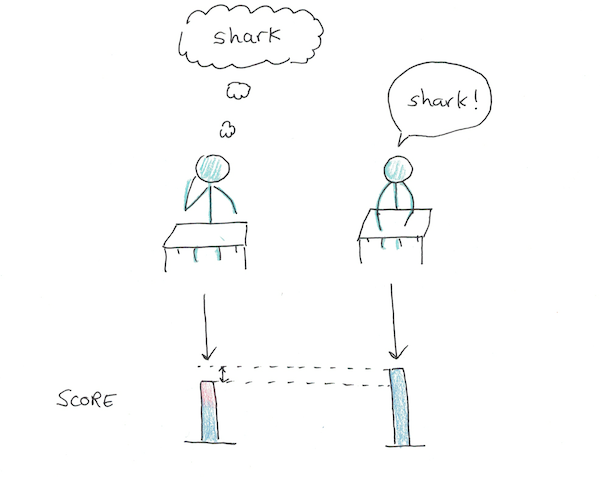
The advantage of reading aloud over reading silently for subsequent memory performance is called the “production effect”.[41]
Scientists believe that producing words makes them more distinctive than reading them silently because you additionally use your vocal cords and facial muscles.[42]
To harness the production effect, however, you shouldn’t read aloud all of your study material. Distinctiveness is relative – a word read aloud will stand out in the context of silently-read words but it won’t stand out if all other words are also read aloud.[43] Therefore, to get the most benefit, we recommend that you use the production effect only for a selection of the most important information.
In summary, we recommend the following:
- Ideally, avoid noise during learning and don’t listen to any kind of music
- The best way to down out noise is by using earplugs (or listening to white noise)
- If you do have to listen to music (because it helps you calm down for instance), choose instrumental music with no lyrics
- To boost your comprehension and memory, read aloud what you’re studying
- Only apply this to a selection of the most important concepts / information
- If you read aloud everything, it won’t work
Visuospatial Sketchpad: Upgrade Your Imagination

Visuospatial sketchpad is the second kind of short-term memory storage. It stores two- or three-dimensional objects and their positions in space.
The visuospatial sketchpad is essential for understanding mathematical, science, technology and engineering subjects. Visuospatial working memory capacity in childhood reliably predicts mathematical achievements in adolescence even when other factors such as intelligence are accounted for.[44]
Strategies for improving your visuospatial working memory
In a stunning study, researchers from Berkley examined the visuospatial skills of engineering students.[45] They found that the men performed on average nearly 10% better than women in various tasks such as mental rotation of objects. The researchers later interviewed experienced engineers and asked them to share their strategies for solving visuospatial problems.
On the basis of these strategies, they designed a visuospatial training program. All women who had low scores were invited to attend the program. Interestingly, after only 3 hours of training, there were no longer any significant differences between men and women.
This study demonstrates how the use of appropriate strategies can substantially (and quickly) help your visuospatial sketchpad. Which strategies are the best? In the study mentioned above, the researchers found that different engineers used different strategies that achieved the same result.
Therefore, there seems to be no single “right” strategy for approaching visuospatial problems. However, you can develop your own strategy. We’re going to show you how to do it on the following task: Have a look at the picture below and try to find the folded cube which cannot be made from the unfolded cube (there’s only one).
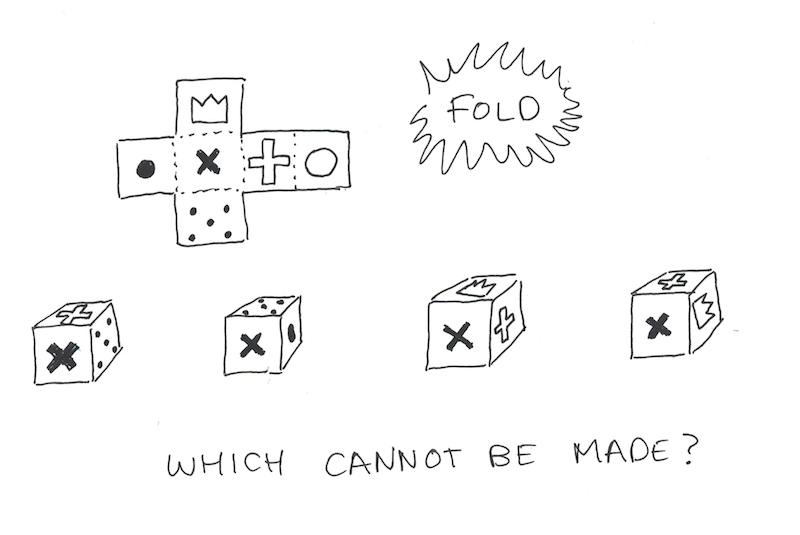
Before we give you the correct answer, think of the strategy that you used. There are two broad strategies for these kinds of problems. A holistic strategy consists of firstly folding the cube, then rotating it mentally as a whole and comparing it with the folded cubes. This is the most working-memory demanding strategy. In contrast, an analytic strategy consists of noticing the relationships between the patterns in a step-by-step way. Let’s walk through an analytic strategy:
If you look at the first folded cube, you can ask yourself: If the white cross is above the black x, can the five dots be on the right?
Then look at the unfolded cube. Visualize the unfolded cube in such a way that the white cross is above the black x.
From this position you can see easily that the first folded cube is the same as the unfolded cube.
As an alternative, you could “unfold” the cubes first, possibly even draw them unfolded. Then rotate and compare the unfolded cubes to see if they fit.
If you apply one of these strategies to the remaining three cubes, you’ll see that it’s the fourth cube that doesn’t fit.
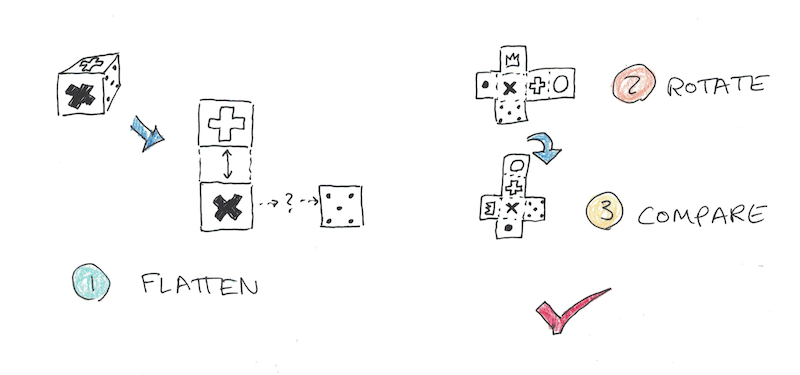
Rather than folding and rotating in one go (which is more difficult for the working memory), try flattening the test cube first, splitting it into parts, and comparing that to the original diagram. Breaking down problems this way can turn something confusing into something easy.
If you can use the holistic approach straightaway then it’s likely that your visuospatial sketchpad has a high capacity. If not, then you can benefit from using a more piecemeal approach. The whole idea is to offload information from your working memory – to break down the task into smaller, more manageable pieces and to store intermediate steps on paper. This way you can achieve the same result as someone with a high working memory capacity, albeit perhaps more slowly.
How to use visualization and drawing to improve learning
The visuospatial sketchpad is useful not only for visuospatial problems. The phonological loop and the visuospatial sketchpad are largely independent of each other.[46] Therefore, you can use your visuospatial sketchpad to help your phonological loop and vice versa.
A beautiful demonstration of how the visuospatial sketchpad can help the phonological loop was carried out by scientists who examined Japanese experts on mental calculation.[47] These experts have a very high digit span (16 number) and they can quickly subtract and add up numbers having up to 9 digits. Where does their miraculous ability come from? Through practice, these experts have learnt to construct a “virtual” abacus in their minds that they use to make calculations.
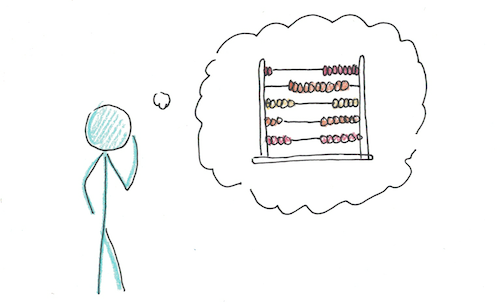
While a mental abacus is probably no longer needed in the age of computers, you can use visualization in other ways: If you’re going shopping and you want to remember shopping list, you can chunk it into one picture. For instance, you could imagine peppers, milk, chicken and mustard as mustard-covered chicken, swimming in a bowl of cereal and surrounded by peppers.

Visualization strategies can be beneficial for your reading comprehension as well. In an interesting study, researchers asked students to read a scientific text from chemistry.[48] One group of students was given no strategy, one group was asked to focus on the text (summarize and find the main points), whereas the last group was asked to use the drawing-construction strategy (draw molecules and their bonds). At the end of the study session, students were assessed with a test.
One would expect that focusing on the text, finding its main points and being able to summarize it, should be the key ingredients of reading comprehension. However, the results showed the exact opposite. The drawing students outperformed the no-strategy students by 30%. What’s more, summarizing actually worsened the performance of the text-focused group compared to the control group.
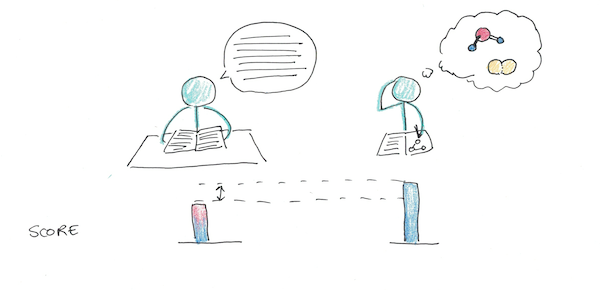
Although the drawing-construction strategy improves students’ comprehension of particular scientific texts,[49] research has yet to show whether it generalizes to all subjects and all kinds of texts. You need to experiment with yourself to find out how when drawing is useful and when it isn’t.
Moreover, the quality of drawings is essential for the technique to be effective.[50] This means that your drawings need to be a faithful representation of the text’s contents, correctly capturing the relationships between different concepts.
Therefore, it undoubtedly takes some practice to master the skill of visualization. Nevertheless, although drawing is not an out-of-the-box strategy, if done well, it can become a powerful technique in you learning arsenal.
In summary, we recommend the following:
- Don’t worry if you have problems with visuospatial tasks – it’s mostly a matter of choosing the right strategy.
- Use the analytical strategy (step-by-step) approach to solve visuospatial tasks.
- Break down complex tasks into small components.
- Offload the results of intermediate steps onto paper.
- Try the drawing-construction strategy to help you with reading comprehension.
- This strategy can make you process information more deeply.
Central Executive: How to Concentrate Your Mind Easily

The central executive is the third component of working memory. The central executive has many functions. Here we’ll focus on allocation of attention and manipulation of information.
The hidden costs of multi-tasking
Selective attention is the ability to direct cognitive resources to things which are relevant to the task at hand and to filter out everything else.[51]
Trying to pay attention to multiple things at the same time (multi-tasking) is generally harmful to performance. Using our workbench analogy from the beginning, imagine that we asked our carpenter to chisel, saw and drill several different pieces of wood at the same time. The result of such effort would likely be a shoddy product. Unsurprisingly, a wealth of studies have shown the detrimental effects of multi-tasking on comprehension, learning and students’ grades. [52]
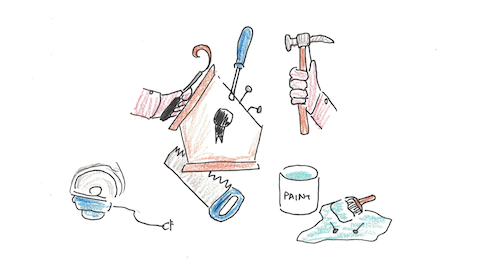
Too many tools, too few hands
As a matter of fact, “multi-tasking” is a bit of a misnomer.[53] True multi-tasking is quite rare because it is very difficult to pay attention to two things at the same time. Multi-tasking typically consist of switching back and forth between multiple tasks, rather than simultaneously focusing on several tasks.
Multi-tasking is inefficient because each switch that you make incurs a cost. [54] If you’re oscillating between reading your notes and checking your phone, for instance, each switch takes some time and energy – you have shift your goals (“Now I want to do this instead of that”) and re-activate the rules for the activity you’re switching to (read a paragraph – type a response).
Although one task switch may only take a few seconds (and seem insignificant), all the myriad switching done within one day can add up to a substantial amount of time and eat away at your productivity.
Who is affected by multi-tasking?
The negative effect of multi-tasking can be quite insidious. In a series of studies,[55] researchers had students read a text passage and assessed their comprehension with tests. Some students also carried out an interruption task (solving a math problem between each paragraph).
Researchers found that the interruption had no effect on students’ knowledge (they could correctly answer questions despite the interruption). However, when global comprehension was assessed (the text’s theme and tone, the author’s goals and morale), the interruption worsened performance by as much as 30%.
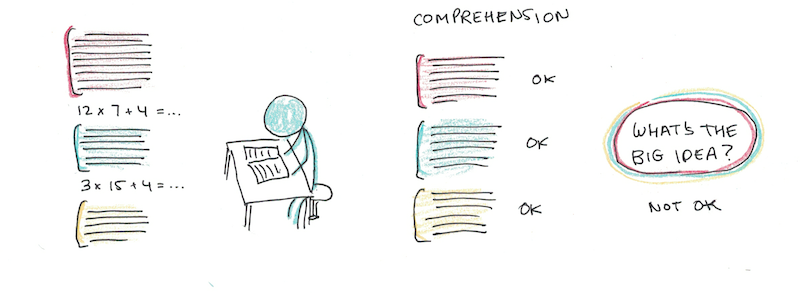
This study nicely demonstrates that you might feel that multi-tasking is not affecting your performance based on the fact that you remember everything from the text easily. However, your comprehension, which requires synthesizing information from different parts of the text, could still suffer.
It may come as a surprise, but multi-tasking may not always harmful. What matters is whether the two tasks employ the same cognitive processes.[56] This happens, for instance, when you’re watching television while reading your notes. Doing these two activities simultaneously is going to interfere with your comprehension as both of these activities compete for access to your phonological loop.
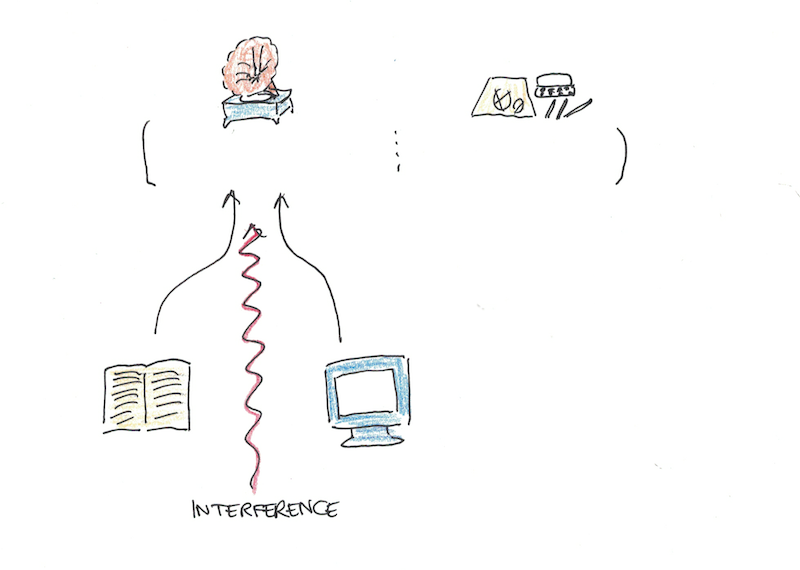
However, reading a book while sitting on the train or practicing flashcards while commuting, will likely not substantially impair your comprehension. (Scott: I was listening to music while drawing the images for this post, but I never listen to music while writing.)
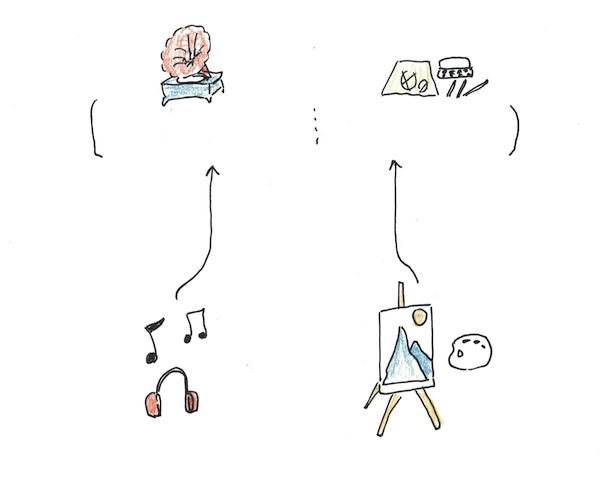
Research has also shown that individuals with a high working memory capacity are more resistant to the negative effects of multi-tasking (especially if the secondary task is not too demanding).[57] Therefore, if you have a high working memory capacity, you might be able to do multi-tasking without substantially hurting your performance.
How badly designed textbooks split your attention
Multi-tasking is a form of dividing your attention. Besides different activities (like watching TV and reading notes), attention can also be divided among different study materials. If you have multiple source materials which you have to look at while studying, then your comprehension will suffer. This is called the split-attention effect.[58]
As a demonstration, we’ve prepared two tasks from geometry. You don’t need to solve the tasks, just have a look at them. Both tasks ask you to do exactly the same thing (calculate two angles), however, each task is presented differently. Which of the two tasks seems easier?
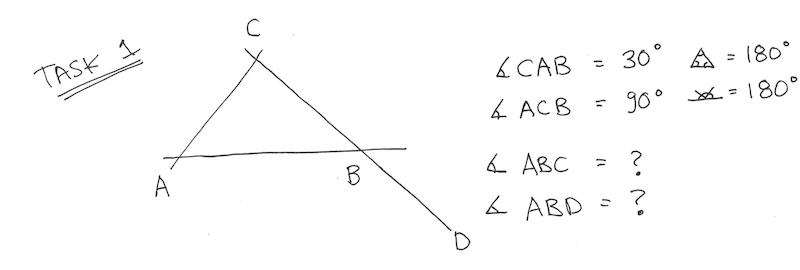
Needlessly confusing….
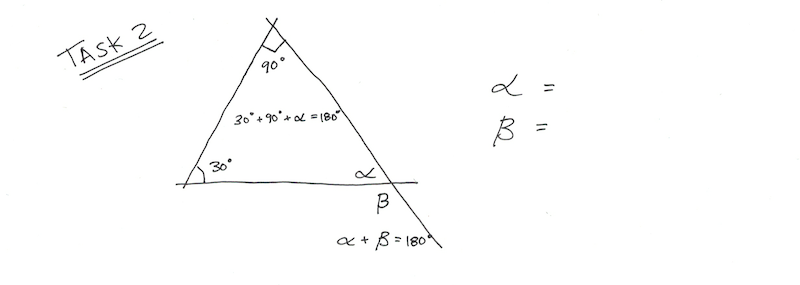
This task is easier, because you don’t need to go back and forth on the picture to figure out how the information relates to each other.
The correct answers are 60°and 120° degrees, respectively. Did you find the second task easier to understand?
Whereas the first task was presented with separate textual and graphical information, the second task featured information integrated into a coherent whole.
The first task placed an unnecessary load on the central executive, which had to shift attention between the text and the picture and combine it together to enable understanding. This was essentially extra manipulation of information that had nothing to do with solving the actual task. In contrast, the second task freed up cognitive resources that could be instead devoted to solving task.
Researchers have found that if study material is presented in an integrated format, then comprehension improves dramatically (one study has reported a 30% improvement compared to split-attention format [59]). This effect has been found for all kinds of subjects, including geometry, programming, geography and engineering.[60]
Consider another example. The simple arrangement and distance of words on vocabulary flashcards can make a significant difference to your retention:
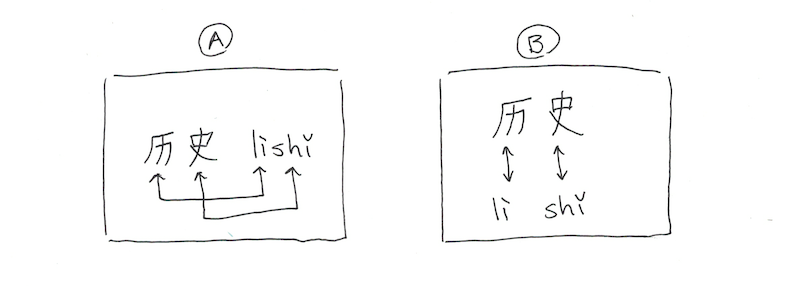
Both of these flashcards are for the Chinese word for “history.” (A) makes it harder to match character to pronunciation than B.
Compared to the second example, the first example places a demand on your central executive, which has to figure out the way from the Chinese character to its phonic equivalent. Indeed, presenting flashcards like the second example substantially improves later recall.[61]
You may not be able to select your study material or perhaps there are no textbooks / lecture notes available which present material in an integrative way. However, you need not depend on the particular way your study material is structured. When taking notes, make sure that you have all information in one place. Stick to the rule “one concept must fit on one page”. If you can’t fit one concept on one page then you need to break it down into smaller concepts.
Pay attention to how your study material is structured. If you have to study from multiple sources (several textbooks / notebooks), it might be a good idea to combine the information and put it all into one place (by re-writing or photocopying for instance). If this is too cumbersome, then drawing a structure, a concept map or an outline of what you’re studying should also help.
If you have difficulty understanding a concept, re-draw graphs and re-write your notes so that everything is integrated in one place. This way you will free up precious working memory resources, which you’ll be able to devote to comprehension.
In summary, we recommend the following:
- Avoid multi-tasking and interruptions even if you feel that it’s not affecting you – the negative effect can be well hidden from your sight
- Multi-tasking will not affect your learning and performance only if the two or more activities that you do simultaneously don’t share the same working memory resources (e.g. practicing flashcards while commuting)
- When studying, put all information relevant to one concept into one place to prevent divided attention
- Try to find study materials which feature integrated information (graphs and text combined together rather than presented separately)
- If necessary, re-draw or photo-copy different parts of your notes/textbooks/lecture notes so that everything is integrated
- Design your own study materials (like flashcards) in an integrative way to boost your memory
Chunking – the secret to expertise
For two years, researchers followed a single student of average intelligence and short-term memory capacity.[62] Every day, the student had to listen to sequences of digits. While at the start, he could only recall 4 digits, by the end of the study, he managed to correctly remember a series of 80 digits.
When interviewing the student, the researchers found that the he was a competitive runner. When hearing the sequences of digits, the student transformed every 4 digits into a running time (e.g. 3492 was transformed to 3 minutes and 49.2 seconds). In this way, he effectively compressed 4 units of information into 1 unit of information.
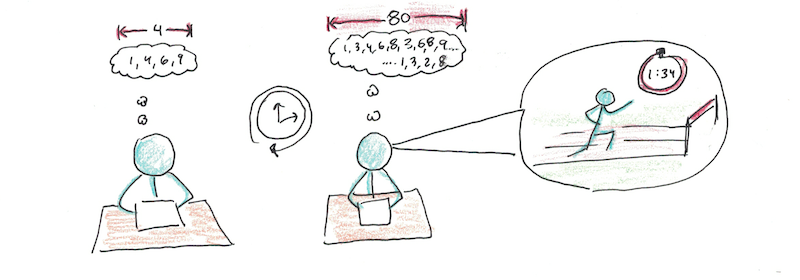
The process of compressing information is called “chunking”. To see how chunking works, you can try the following little experiment:[63]
- Look at these letters for 10 seconds and try to memorize as many of them as possible, while covering the rest of the page:

- Now do the same thing with these letters:

The chances are that you probably couldn’t recall all of the letters from the first list, but you could easily recall all of the letters from the second list. What’s going on here?
You may have noticed that the letters in both lists are the same, only arranged differently. However, while in the first list you had to memorize 12 letters (which is way above the average short-term memory span), in the second list you were not memorizing letters at all. Instead, you memorized 4 syllables (FRAC-TO-LIS-TIC).
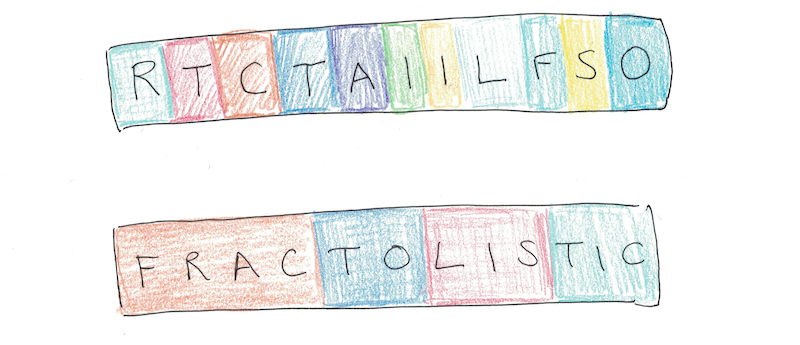
The key idea behind chunking is that you group the underlying items by some sort of meaning or structure. The group then becomes a single unit (=chunk). Although our short-term memory can only hold 4 chunks at a time, these chunks can be fairly complex.
How to use chunking as a mnemonic technique
You can easily use chunking to memorize phone numbers, passwords or PIN codes. Simply divide the given sequence into chunks containing the maximum of 4 items each. For instance, to remember the phone number 743293045, you could split the number with dashes like this: 743-293-045. This way, you effectively have to remember only 3 chunks of information, instead of 9 separate digits. If you’re interested in more advanced chunking methods for long sequences of numbers, have a look at the phonetic-number system.
You can also use chunking to boost your learning. A useful chunking technique is organization. Organization is when you categorize unstructured study material into meaningful groups. For example, you can group foreign language vocabulary based on topics, similar meanings (synonyms) or similar pronunciation.
The structure can also be more complex (hierarchical). For instance, you can study chemical elements grouped by their various properties. Research shows that people can memorize up to twice as many hierarchically organized items than unorganized items.[64]
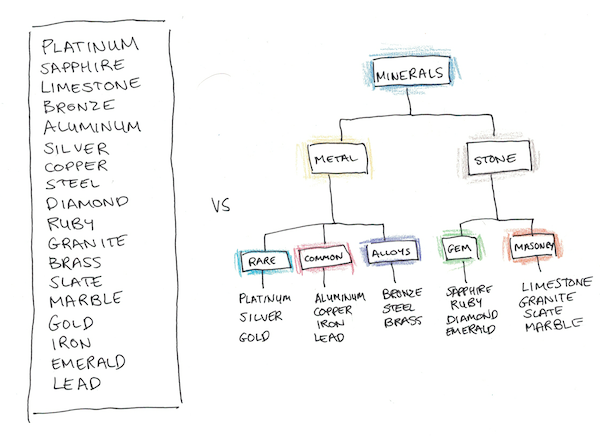
Chunking works by reducing memory load
Chunking reduces the load on working memory because it replaces the items in your working memory with items from your long-term memory.[65] To see how it works, try the following experiment:
Memorize the following list of 5 words (while covering the rest of the page). You have 5 seconds:
large, run, tremble, believe, fish, series
How many words did you remember?
Now memorize another list of 5 words. You have 5 seconds:
besar, berlari, gemetar, percaya, ikan, siri
How many words did you remember now? Although the second list contained the same number of words (which had the same meaning and almost the same number of letters in total), you probably remembered fewer words from the second list than from the first list. How is this possible?
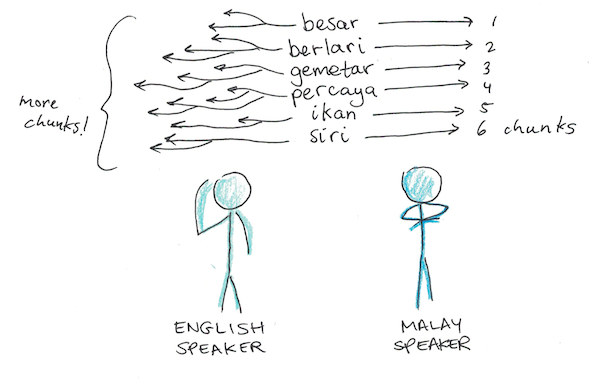
As an English speaker, you probably knew all the words from the first list. However, unless you speak Malay, you didn’t know any of the words from the second list. The first list was easier precisely because you could use your pre-existing knowledge of English vocabulary stored in your long-term memory. You simply “downloaded” each word from your long-term memory as a chunk.
In contrast, since you couldn’t retrieve the Malay words from your long-term memory, you could only “download” smaller chunks from your long-term memory – syllables or letters. As a result, there were many more pieces of information that had to be stored in your working memory from the second list.
Researchers have found that although humans have a very limited working memory capacity, their long-term memory capacity can be astonishingly high. In one study,[66] scientists asked subjects to look at 2500 pictures for three seconds each. After that, they asked them about the details of selected pictures such as the positions of objects, their shape and color. Surprisingly, subjects were 90% accurate at remembering the details of the pictures.
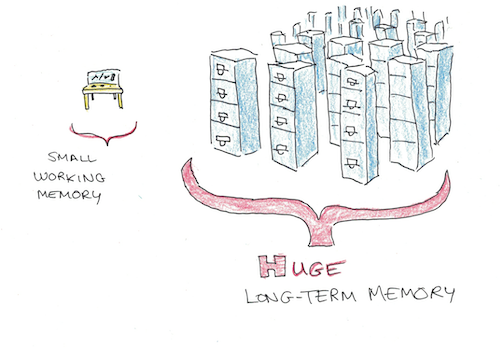
Therefore, the most powerful way that you can free up your working memory capacity is by drawing on your long-term memory resources. The more knowledge you have stored in your long-term memory, the less information you need to process with your working memory and the easier will it be to understand your study material and solve problems.
How experts use chunks
Chunking is the secret behind acquiring mastery in any subject [67] (alternative explanations have also been proposed – see Ericsson’s long-term working-memory hypothesis).[68] This is because any kind of complex skill is essentially a huge chunk containing a large number of nested chunks.
Consider playing the piano: Playing the piano consists of many skills, such as sight reading, finger techniques, understanding of rhythm, pushing the pedals, and many others. Each of these skills also consists of further sub-skills. For example, sight reading requires the knowledge of keys, notes, scales and various musical symbols denoting rhythm and volume. For a novice player, doing all of these things at the same time is an impossible task. And yet expert musicians can play complex pieces with little effort, even by sight-reading only.
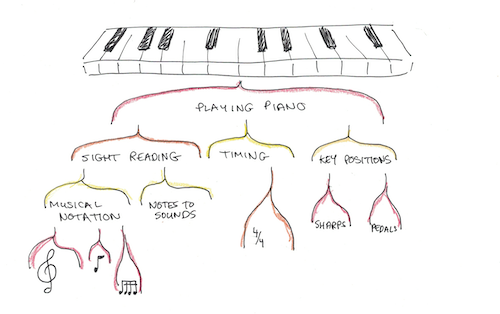
Expert musicians can play the piano with little effort precisely because they do not have to retrieve each individual skill separately. This would overload their working memory and make performance impossible. Instead, they retrieve one large chunk from their long-term memory that contains all of these sub-skills “compressed” within it. This saves precious working memory resources which can be devoted to processing other information such as sight-reading.
Therefore, to master any subject, you need to firstly build solid foundations of the basics (the elementary chunks). Only then can you attempt to form increasingly complex chunks.
Build chunks with pre-training
Understanding chunking can help you with your comprehension and problem-solving skills. If you’re experiencing difficulty understanding your study material or cannot solve a problem, then it’s likely that your working memory is overloaded.[69] Working memory becomes overloaded if it has to process too much information at the same time. This typically happens when you don’t have sufficient knowledge of the prerequisites.
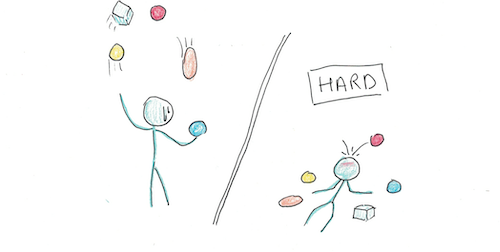
If this is the case, practicing your target skill (e.g. solving many differential equations) likely won’t be of much help or it will be inefficient. A far superior strategy is to firstly identify the underlying sub-skills (arithmetic, algebra) that you may be lacking and master these first. This way you can save yourself substantial amounts of time and effort.
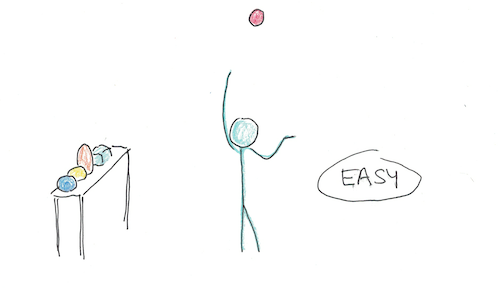
If you have difficulty understanding something, firstly identify the underlying chunks and store them into your long-term memory. This technique is called pre-training.[70] Pre-training is very effective for all kinds of subjects. As an illustration, consider the following study: [71]
Students were taught about the car-braking system. One group was firstly introduced to the names of each component (the pedals, the piston, the master cylinder) and their locations. Only once they had mastered the individual components were they taught about their behavior and how they worked together to achieve braking. In contrast, the second group of students was taught all information at once.
Although both groups were exposed to identical material, the pre-training procedure led to substantially better comprehension and recall (up to 30%) than presenting all information at the same time.
You can use pre-training to approach any study material. Firstly, identify the key concepts and vocabulary. Secondly, use the internet or any other resource to find simple definitions. Thirdly, begin to explore how the concepts relate to one another.
In all courses and textbooks it’s often the case that each new lecture (or chapter) requires some knowledge of the previous chapters. If you’re having difficulty understanding a lecture, you might be missing something from the previous lectures and you need to re-study it.
If you have trouble solving mathematical problems, it’s likely that you don’t have properly formed chunks for the underlying operations. For instance, it’s difficult to solve a differential equation without the knowledge of algebra (re-arranging equations) and arithmetic (addition, subtraction, multiplication and division). If you master the underlying sub-skills first, then mathematics will be much easier.
Our general recommendations are the following:
- Use chunking to compress information so that you can remember more.
- You can chunk your study materials by grouping concepts into categories.
- For instance, you can group foreign language vocabulary by topics, similar meanings, or similar pronunciation.
- To gain expertise in any subject or skill, you need to build increasingly complex chunks of information
- You can do this with pre-training (pre-studying the definitions and meanings of concepts before your lecture or before you read a textbook)
- If you don’t understand something, try to identify what exactly you’re having a problem with and study this first
- Firstly master the underlying sub-skills and then practice your target skill to save time and energy
Cognitive load: the culprit behind learning difficulties
So far we’ve talked about various ways how you can reduce the load placed on your working memory in order to boost your comprehension and problem-solving skills. Scientists have developed a theory of cognitive load which explores in detail the different kinds of load that can be placed on working memory.[72]

Cognitive load is defined as the effort used by the working memory system to process information. The main idea of the cognitive load theory is that working memory capacity is limited. If the working memory resources that are needed to process information are greater than your capacity, then you will fail to understand the information. Using our workbench analogy, this would be comparable to our carpenter trying work with too many tools and materials at the same time, which would start falling off the workbench as a result.
There are three types of cognitive load: Intrinsic, extrinsic and germane. All types of load are additive – their sum makes up the overall load on your working memory.
Reduce intrinsic load with segmenting and worked-examples
Intrinsic load is associated with the task, it’s basically the level of difficulty of the subject. As an illustration, compare the obvious differences in difficulty between solving a simple calculation (2 + 2 =?) and a complicated equation like the one below:

Intrinsic load is fixed for a particular kind of task and for each individual (given their current level of abilities). High intrinsic load can be beneficial as it stimulates effective learning. However, if it exceeds your working memory resources, it can impair your learning.
One way you can reduce intrinsic load is by gaining more knowledge of the underlying chunks (we covered this in the previous section). Another way is to reduce the complexity of the material.
You can reduce complexity by segmenting and sequencing.[73] Instead of reading a textbook chapter all at once, split it up into bite-sized chunks. Separate long passages of text graphically (e.g. draw a line to create new paragraphs if necessary). When you’ve done this, study the information step by step. If you come across a graph or a passage that you cannot understand, cover up parts of it and focus on smaller elements. The less information you need to process at one time, the easier it will be to understand it.
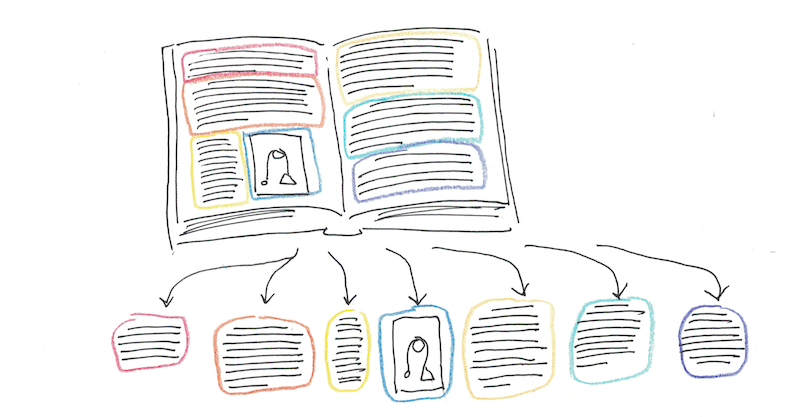
Another great way to reduce complexity is by going through worked-example problems.[74] Worked examples guide you through each step of problem-solving and teach you the model that you can then apply on new problems. Worked examples are especially useful during early stages of learning. Many textbooks now have worked examples.
However, be careful – badly designed worked examples are useless. Good worked-examples have clear language and graphics and are easy to follow. If your worked example is difficult to understand – it causes high cognitive load – then you need to find a different one.
Reduce extrinsic load with visually simple textbooks and a goal-free approach
In contrast with intrinsic load, extrinsic load is associated with the way the study material is presented. If you’re experiencing difficulty understanding something, maybe it’s because of high extrinsic load.
Perhaps your lecturer is difficult to understand. Maybe your textbook / lecture notes are not well written and understandable. Do not feel that you are stuck with whatever your course offers to you. Devoting some time before you start learning something to find high-quality materials is definitely a worthwhile investment.
One reason why study materials may impose a high cognitive load is because they contain a lot of redundant information. Authors of textbooks often try to make them visually appealing by including lots of unnecessary decorations, photos and graphics. The rule of thumb is that the more visually appealing a textbook is, the higher extrinsic load it will impose. Unless they are used for explanation of study material, graphics only burden the visuospatial sketchpad.
Another way that you can reduce extrinsic load is by approaching problems in a goal-free way. In the geometrical example that we presented in section “visuospatial sketchpad”, the goal was to compute the angles alpha and beta. A goal-free approach to this problem would be to calculate any kind of angle and as many angles as possible in any order.[75]
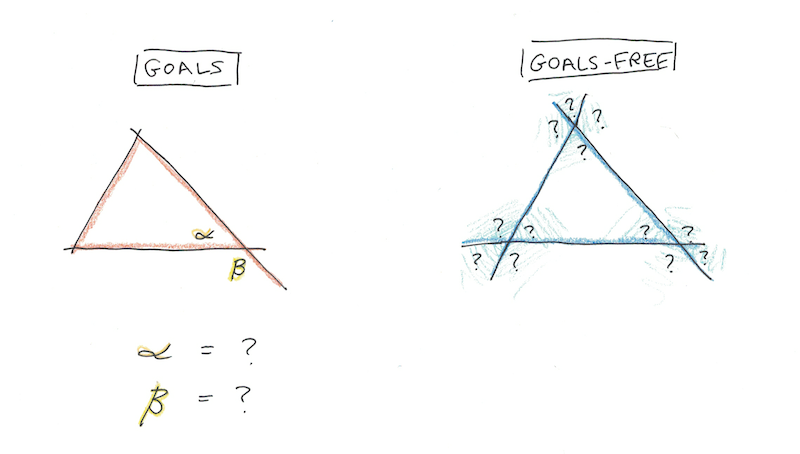
If you have a given goal, then you have to process the goal, the problem givens and the difference between the two simultaneously. In a goal-free approach, you focus only on the current state and how to get to the next state. As a result, the extrinsic load on your working memory is decreased.
The goal-free approach is particularly suitable for math and programming.[76] For instance, if you have a programming assignment, instead of trying to solve it straight-away, firstly explore its components. Play with different functions – see what kind of inputs they take and what outputs they produce. Similarly, if you’re solving a math or geometry problem such as the one above, don’t try to reach the goal immediately. Instead, explore the problem and calculate different things in a step-by-step way.
How to optimize cognitive load
The third type of cognitive load is called germane. Germane load is the effort that you have to make to construct integrated chunks of information (called schemas) from the concepts in your study material. To successfully learn something, you need to devote some of your working-memory resources to germane load. To achieve this, you need to minimize the level of extrinsic load and optimize the level of intrinsic load (i.e. find the right level of difficulty).
How do you know which type of cognitive load is causing you problems? Researchers have developed a simple questionnaire that reliably tells apart between different types of cognitive load.[77]
In essence, if you feel that the activity, the covered concepts, formulas or definitions are complex, then high intrinsic load is likely the culprit. However, if you feel that the instructions/explanations are unclear or ineffective, or full of unclear language, then the problem lies with high extrinsic load.
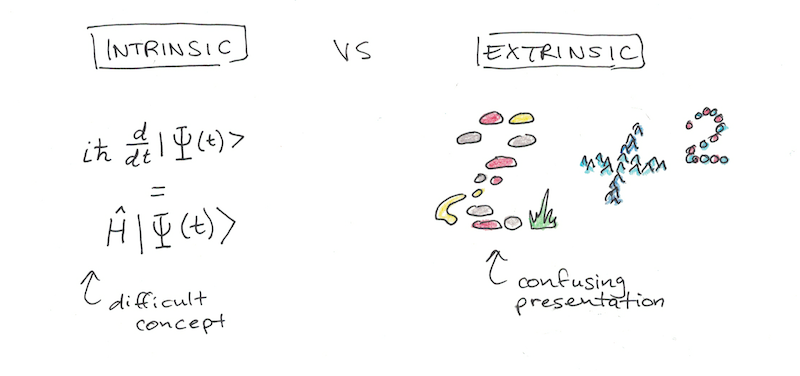
In summary, we recommend the following:
- If your study material feels too complex, then you need to reduce your intrinsic load
- If your study material feels unclear or confusing, then you need to reduce your extrinsic load
- To reduce intrinsic load, use segmenting and sequencing or find some worked examples
- To reduce extrinsic load, find study materials with clear language and modest graphics, and approach solving problems in a goal-free way
Anxiety: how to turn it into excitement
So far we have covered various things that can place a load on your working memory and impair your comprehension and problem-solving skills. It turns out that one of the major causes of cognitive load is anxiety.
Try to imagine how well our carpenter would perform if she felt anxious. Her hands would probably tremble and she would have difficulty concentrating. In fact, she might even drill a hole in the wrong place or saw off an important part, spoiling the final product.
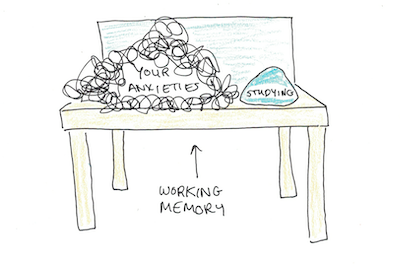
Anxiety is especially harmful to mathematics,[78] but it can also worsen performance in other subjects, such as biology.[79] One would expect that individuals with an already low working memory capacity would be most affected by anxiety. However, the opposite is true. High working memory capacity individuals use high-demand strategies for solving problems. Performance pressure takes away the resources that these individuals need to solve problems.
Why does anxiety burden our working memory?
Scientists believe that when you are anxious, your working memory is preoccupied with anxious thoughts.[80] So instead of the task at hand, your short-term storage is filled with irrelevant information. In particular, verbal rumination (sub-vocally repeating anxious thoughts) interferes with the phonological loop. Anxious thoughts can be associated with images, which occupy the visuospatial sketchpad. Moreover, if you pay attention to these anxious thoughts, this also places demands on the central executive.
Math anxiety could be a learned phenomenon. Researchers believe that we learn anxiety from our parents when they help us with homework.[81] They give out verbal and non-verbal signals that math is something difficult and anxiety-provoking.
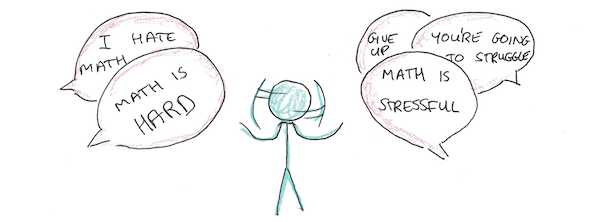
Unfortunately, math anxiety is also caused directly by teachers. Teachers who are themselves insecure about their mathematical ability (it’s surprising how many of them are!) [82] tend to give harsh feedback, use defective teaching methods and spread the toxic belief that some people can never become good at math. All of these factors have a severe impact on students’ mathematical abilities and self-confidence.
How you can overcome anxiety
It may be impossible to change your school or university teacher. However, in the age of internet you’re not bound to one incompetent teacher. For math in particular, you can check online courses and websites (the best one is the Khan Academy) which have excellent teachers who will guide you through the whole curriculum step-by-step, with a calm reassuring voice and completely for free. Don’t let your teacher spoil your experience with math – ignore them, take the initiative and make a switch to someone better.
In addition, you can take steps to effectively address your own anxiety. It turns out that the effect that anxiety has on your performance largely depends on the beliefs you have about it. If you believe that math anxiety will harm you, then you will perform worse. On the other hand, if you believe that math anxiety will help you perform better, then it won’t impact on you.[83]
One way to overcome anxiety is therefore through a technique called “cognitive reappraisal”.[84] Try to think of anxiety not as anxiety, but as excitement. These two emotions are both arousing and seem to be quite similar physiologically. Researchers have found that although such a simple reframing of your emotions does nothing to change your anxiety level or bodily response (heart rate, etc.), it improves your performance.
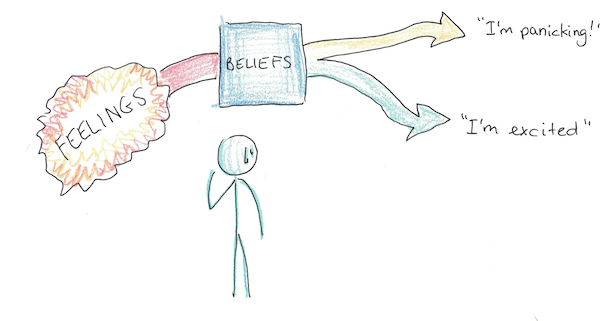
Panic and excitement feel similar. It’s how we interpret those feelings that makes the difference.
You can reframe your mindset by using subvocalization or speaking aloud to yourself. In particular, you can override the anxious thoughts by repeating excitement-promoting mantras (“I’m excited”, “Get excited”). Often it’s as simple as that. Even reading an article about the benefits of short-term stress can help.
Another techniques that has been found to be effective is expressive writing (or journaling).[85] If you are anxious about a test or an exam, write about your thoughts and your worries. By writing these down, you can effectively offload them from your working memory. Expressive writing is especially effective if you elaborate in detail on your deep feelings and what in particular is causing you to feel anxious (which aspects of math or math tests you’re most afraid).
In summary, we recommend the following:
- If your teacher is math-anxious, ignore them and find a better teacher online (e.g. the Khan academy)
- Use cognitive reappraisal and subvocalization to transform anxiety into excitement (“I’m excited”)
- Use expressive writing to offload your worries from memory onto paper
Summary and conclusion
Let’s recap what we’ve learned!
Your working memory is the workbench of your mind. It keeps track of what you’re seeing, hearing, thinking and imagining while allowing you to work with that to produce long-term memories and solutions.
The most popular scientific model has four components of which we reviewed the most well-studied three:
- Phonological Loop. Keeps track of what you’ve just heard. Also used to subvocalize thoughts, while reading, speaking or thinking.
- Visuospatial Sketchpad. Keeps track of pictures and spatial information.
- Central Executive. Allocates attention and manipulates information, just like a carpenter on the workbench.
The most important finding about working memories is that they are limited. The average person can only hold 4-7 pieces of information at a time.
The flip-side of this is that we can chunk information. By combining complex information into recognizable chunks, even super complicated things can fit onto your mental workbench.
To make best use of your working memory:
- Avoid music and distracting sounds while doing mentally demanding work and studying.
- Emphasize the most important information by speaking it aloud.
- Use visual mnemonics to keep track of more ideas at once.
- Visualization can improve studying over merely summarizing for some subjects. Try to apply your imagination more when you study.
- If you struggle with a problem, break it into simpler parts.
- Mastery comes from chunking–building up stored patterns so complex things become simple.
In addition to the components of working memory, we talked about three other issues. Chunking, cognitive load and anxiety.
Cognitive load determines a lot of what makes something confusing or difficult. (Attention and specific learning disabilities, can also be factors, however.) In particular there are three types of cognitive loads:
- Intrinsic load. The difficulty of the idea itself.
- Extrinsic load. Difficulties due to poor presentation/instruction.
- Germane load. The effort required to make new chunks and remember.
You can mitigate intrinsic load by pre-training. Breaking down a complex subject into simple parts, which you master first before moving on.
You can ease extrinsic load by finding good resources for learning, or reorganizing confusing ones.
Finally anxiety has a big impact on working memory. By crowding out the information you need to process, distracting thoughts can make it very hard to perform. Try reframing your anxiety as excitement, seeking confident instructors and journaling your thoughts to make it easier.